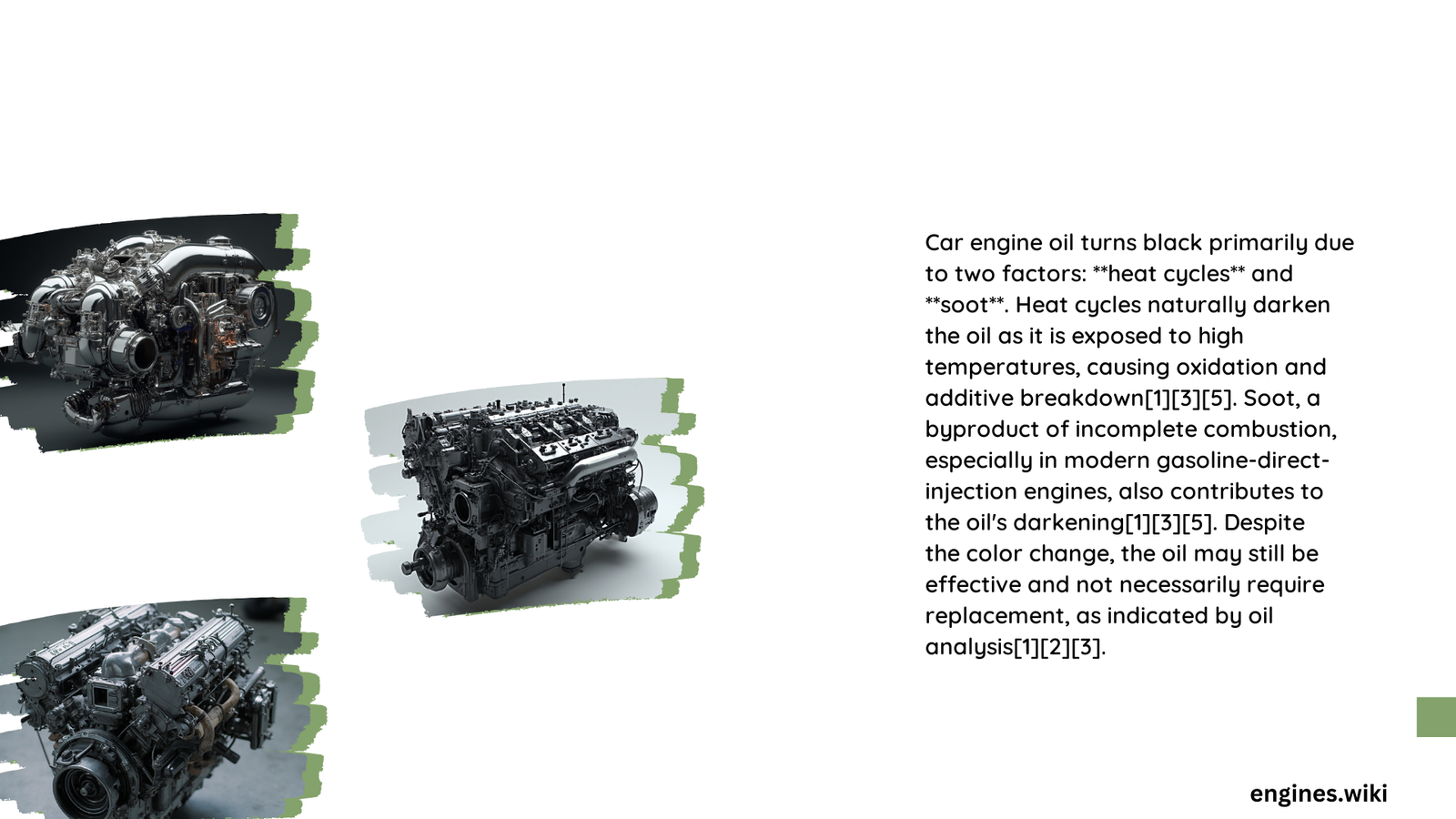Car engine oil transforms from its original amber or golden hue to a dark, black color through complex interactions with engine components, heat cycles, and combustion byproducts. This color change is a natural process indicating the oil’s exposure to extreme temperatures, soot, and contaminants during normal engine operation. Understanding these mechanisms helps vehicle owners maintain optimal engine health and performance.
Why Does Car Engine Oil Turn Black?
What Causes Initial Color Transformation?
Engine oil’s color change is a multifaceted phenomenon driven by several critical factors:
Heat Cycle Dynamics
- Temperature Range: 90.6°C-104°C (195°F-220°F)
- Oxidation Process: Similar to apple browning or metal rusting
- Chemical Breakdown: Oxygen molecules interact with oil molecules
Soot Generation Mechanisms
| Soot Source | Particle Size | Engine Type |
|---|---|---|
| Incomplete Combustion | < 1 micron | Diesel Engines |
| Direct Injection | < 1 micron | Gasoline Engines |
| Blow-by Gases | Variable | All Modern Engines |
How Do Contaminants Influence Oil Color?
Contaminants contribute significantly to oil darkening through multiple pathways:
- Carbon Deposit Accumulation
- Generated during combustion process
- Transferred through engine oil circulation
-
Gradually darken oil’s appearance
-
Particulate Matter Integration
- Dust particles
- Fuel residues
- Microscopic metal fragments
What Impact Does Black Oil Have on Engine Performance?
Performance Implications
- Wear Rate Potential: Increased if contaminants agglomerate
- Filtration Efficiency: Depends on oil filter’s capability
- Viscosity Maintenance: Critical for long-term engine health
When Should You Change Darkened Engine Oil?
Recommended Monitoring Strategies
- Check oil consistency monthly
- Observe color and thickness
- Follow manufacturer’s recommended intervals
- Perform periodic oil analysis
How Can You Prevent Rapid Oil Darkening?
Preventive Maintenance Techniques:
– Use high-quality synthetic oils
– Implement regular oil changes
– Choose oils matching specific engine requirements
– Minimize extreme driving conditions
What Professional Mechanics Recommend
Experts suggest:
– Annual comprehensive oil analysis
– Use of advanced synthetic lubricants
– Regular engine inspections
– Understanding individual vehicle’s maintenance needs
Technical Insights

Chemical Composition Changes
- Total Acid Number (TAN): Indicates oil degradation
- Viscosity Measurements: Reflect oil’s functional capacity
- Contamination Levels: Determine oil’s remaining effectiveness
Conclusion
Black engine oil is not inherently problematic but signals ongoing engine processes. Regular monitoring, understanding its origins, and proactive maintenance ensure optimal vehicle performance.
